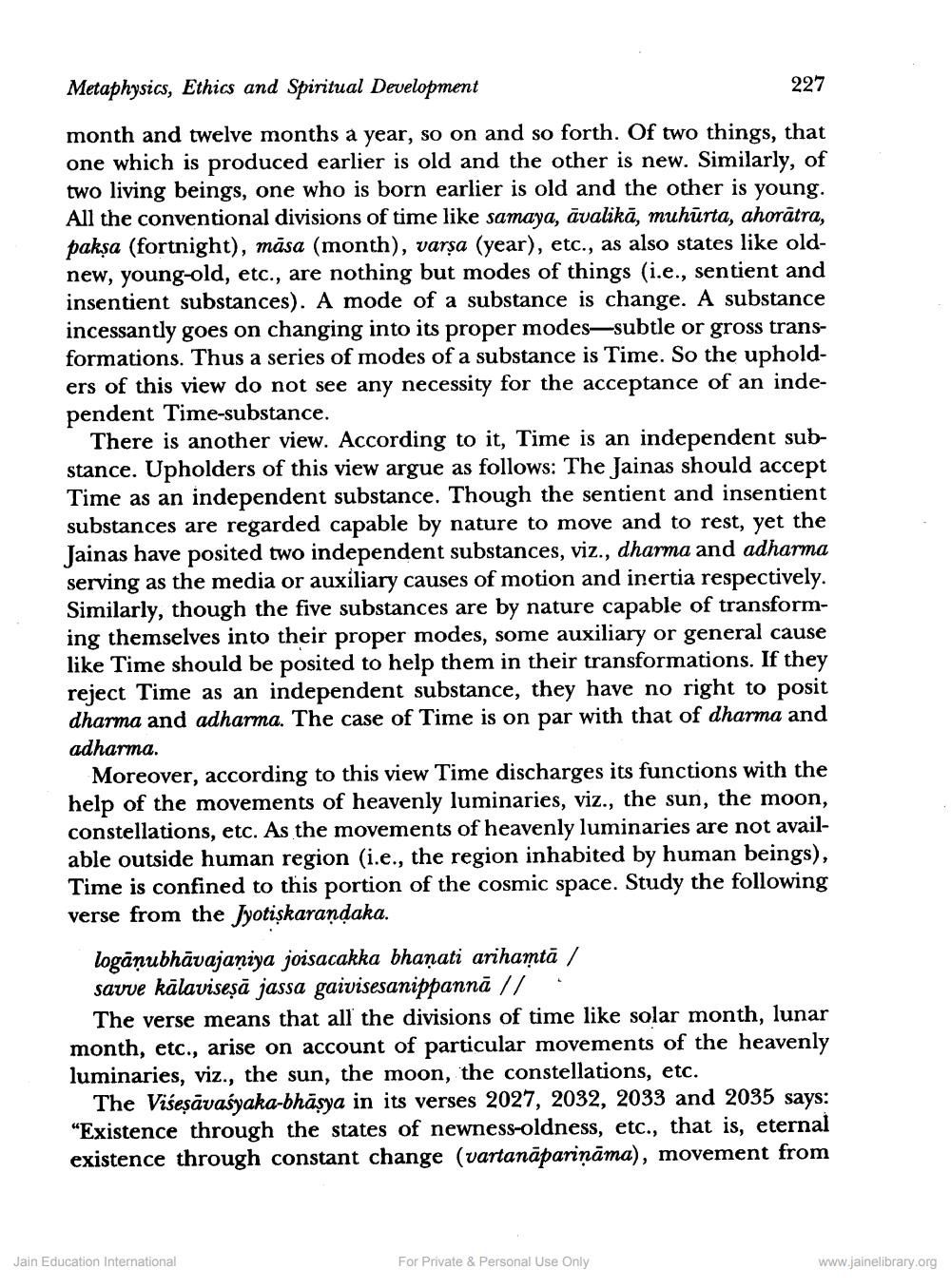________________
Metaphysics, Ethics and Spiritual Development
227
month and twelve months a year, so on and so forth. Of two things, that one which is produced earlier is old and the other is new. Similarly, of two living beings, one who is born earlier is old and the other is young. All the conventional divisions of time like samaya, āvalikā, muhurta, ahoratra, paksa (fortnight), māsa (month), varsa (year), etc., as also states like oldnew, young-old, etc., are nothing but modes of things (i.e., sentient and insentient substances). A mode of a substance is change. A substance incessantly goes on changing into its proper modes—subtle or gross transformations. Thus a series of modes of a substance is Time. So the upholders of this view do not see any necessity for the acceptance of an independent Time-substance.
There is another view. According to it, Time is an independent substance. Upholders of this view argue as follows: The Jainas should accept Time as an independent substance. Though the sentient and insentient substances are regarded capable by nature to move and to rest, yet the Jainas have posited two independent substances, viz., dharma and adharma serving as the media or auxiliary causes of motion and inertia respectively. Similarly, though the five substances are by nature capable of transforming themselves into their proper modes, some auxiliary or general cause like Time should be posited to help them in their transformations. If they reject Time as an independent substance, they have no right to posit dharma and adharma. The case of Time is on par with that of dharma and adharma.
Moreover, according to this view Time discharges its functions with the help of the movements of heavenly luminaries, viz., the sun, the moon, constellations, etc. As the movements of heavenly luminaries are not available outside human region (i.e., the region inhabited by human beings), Time is confined to this portion of the cosmic space. Study the following verse from the Jyotiskarandaka.
logāņubhāvajaņiya joisacakka bhaņati arihamtā / savve kālaviseşā jassa gaivisesanippannā // .
The verse means that all the divisions of time like solar month, lunar month, etc., arise on account of particular movements of the heavenly luminaries, viz., the sun, the moon, the constellations, etc.
The Viśeşāvaśyaka-bhäsya in its verses 2027, 2032, 2033 and 2035 says: "Existence through the states of newness-oldness, etc., that is, eternal existence through constant change (vartanäpariņāma), movement from
Jain Education International
For Private & Personal Use Only
www.jainelibrary.org




